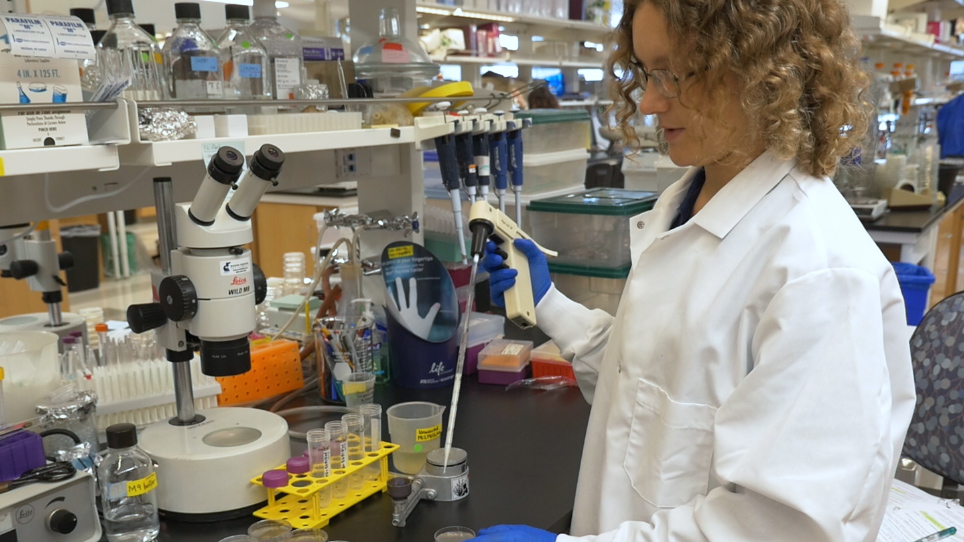/
/
Le c. elegans intestin comme un modèle intercellulaires Lumen morphogenèse et In Vivo polarisé la biogenèse membranaire au niveau unicellulaire : marquage par des anticorps, RNAi perte de fonction analyse et imagerie
A subscription to JoVE is required to view this content. Sign in or start your free trial.
JoVE Journal
Developmental Biology
The C. elegans Intestine As a Model for Intercellular Lumen Morphogenesis and In Vivo Polarized Membrane Biogenesis at the Single-cell Level: Labeling by Antibody Staining, RNAi Loss-of-function Analysis and Imaging
Chapters
- 00:05Title
- 01:24Introduction to the Accompanying Publication
- 02:47Nematode Fixation
- 04:19Nematode Antibody Staining
- 06:33Applying RNAi to Nematodes Using a Feeding Protocol
- 07:57Analyzing Phenotypes Using Fluorescence Dissecting Microscopy
- 08:41Analyzing Phenotypes Using Confocal Microscopy
- 10:14Results: Immunohistochemistry, RNAi and Microscopic Analysis of Intestinal Apical membrane and Lumen Morphogenesis
- 11:45Conclusion
Le transparent c. elegans intestin peut servir comme une «en vivo tissu chambre » pour l’étude des apicobasal la biogenèse membranaire et lumen au niveau unicellulaire et subcellulaire pendant tubulogenèse multicellulaires. Ce protocole décrit comment combiner un étiquetage standard, perte de fonction génétique/ARNi et approches microscopiques de disséquer ces processus au niveau moléculaire.
Tags
C. ElegansIntestineIntercellular LumenMembrane BiogenesisPolarized MembraneSingle-cell LevelAntibody StainingRNAiLoss-of-function AnalysisImagingMorphogenesisApical MembraneBasolateral MembranePolarityTubulogenesisExcretory CanalTransgenic AnimalsFluorescent Fusion ProteinsLive ImagingImmunohistochemistryMembrane MarkersPromoters










